Double vaccines 'could hasten the end of polio'
- Published

Using both types of polio vaccine could speed up efforts to free the world of the disease, research suggests.
The oral vaccine is leading the fight to eradicate polio, but trials in India show an additional injection of inactivated virus boosts immunity.
The World Health Organization said the findings, published in the journal Science, were "truly historic".
The disease, which is spread through contaminated faeces, can cause paralysis and even death.
Fighting polio has been one of the biggest success stories in global health.
In 1988, there were 350,000 cases of polio in more than 125 countries.
The disease is now widespread in just three countries, external - Nigeria, Afghanistan and Pakistan - and cases have fallen by more than 99%.
Vaccines
Two drops of the oral vaccine, which contains a weakened polio virus, is the preferred tool in eradication efforts because it is cheap and gives resistance in the digestive tract to lower transmission of the virus.
The injected vaccine works largely in the bloodstream.
"But the oral vaccine is less effective in exactly those places we'd like it to work," one of the researchers, Prof Nicholas Grassly, of Imperial College London, told the BBC.
It is thought other infections may interfere with the vaccine.
The solution has been multiple vaccination. As part of India's successful eradication campaign, some children received 30 doses by the age of five.
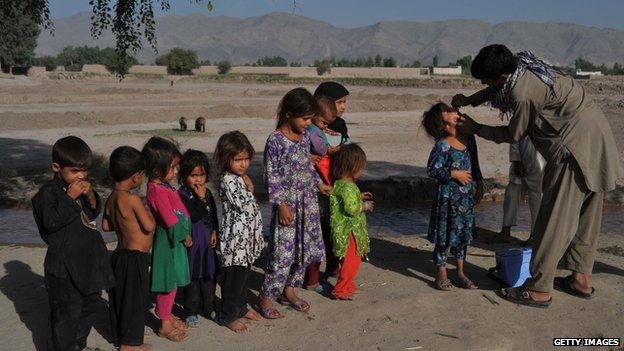
Trials in India showed using an injection of inactivated virus as a booster jab was more effective than multiple drops.
However, the biggest challenge in banishing the disease for good is not the choice of vaccine, but getting to children in conflict-ridden areas.
The security issues can be huge and vaccination programmes are even used as a political weapon.
In 2012, the Taliban said vaccinations in the North and South Waziristan regions of Pakistan were banned until the US ended drone strikes.
Prof Grassly argues: "If you have limited access, you want the biggest return. If you can go in with inactivated and oral polio vaccine, you will achieve a lot more than if you just have brief access with oral polio vaccine."
The double-vaccine approach is already being used in parts of Nigeria and will soon be introduced into Pakistan also.
Dr Bruce Aylward, the World Health Organization assistant director general for polio, said: "The results of this study are truly historic in the context of global polio eradication.
"This study has revolutionised our understanding of inactivated polio vaccine and how to use it in the global eradication effort to ensure children receive the best and quickest protection possible from this disease."
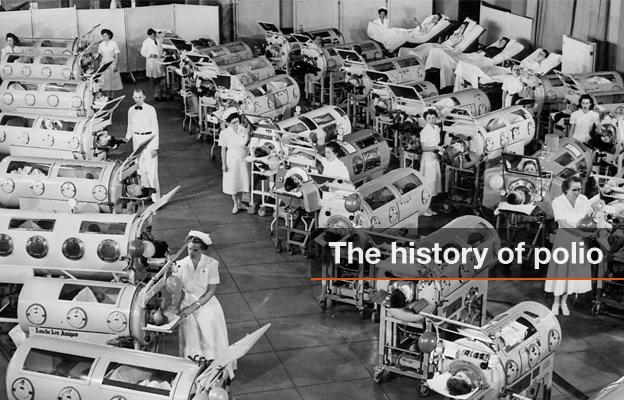
Poliomyelitis has existed as long as human society, but became a major public health issue in late Victorian times with major epidemics in Europe and the United States. The disease, which causes spinal and respiratory paralysis, can kill and remains incurable but vaccines have assisted in its almost total eradication today.
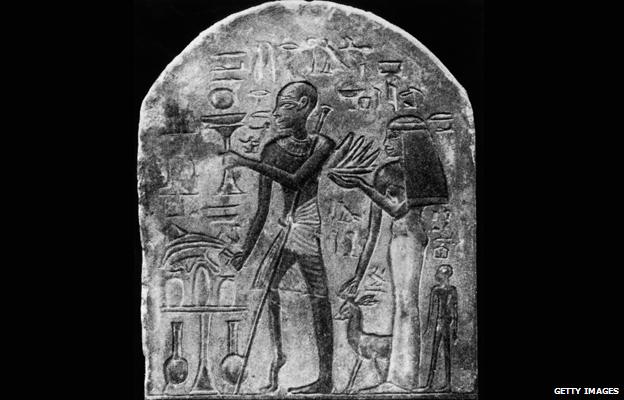
This Egyptian stele (upright stone carving) dating from 1403-1365BC shows a priest with a walking stick and foot deformities characteristic of polio. The disease was given its first clinical description in 1789 by the British physician Michael Underwood, and recognised as a condition by Jakob Heine in 1840. The first modern epidemics were fuelled by the growth of cities after the Industrial Revolution.

New York had the first large polio epidemic, in 1916, with more than 9,000 cases and 2,343 deaths. The toll across the US was 27,000 cases and 6,000 deaths. Children were particularly affected, including by eye paralysis (above). Major polio outbreaks became more frequent during the century - in 1952, the US had a record 57,628 cases.
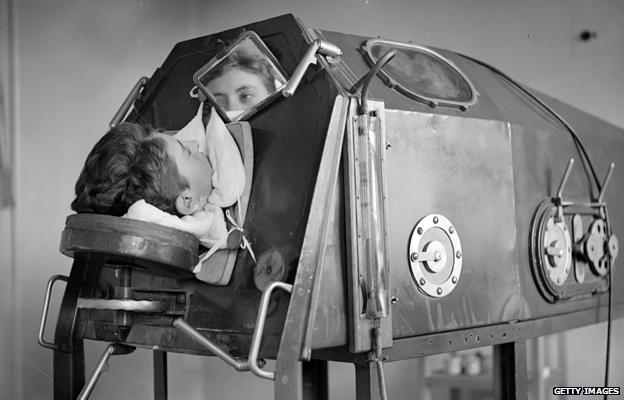
In 1928, Philip Drinker and Louie Shaw developed the "iron lung" to save the lives of those paralysed by polio and unable to breathe. Most patients would spend around two weeks in the device, but those permanently paralysed faced a lifetime of confinement. By 1939, around 1,000 of the machines were in use in the US. Today, the iron lung is all but gone, made redundant by vaccinations and modern mechanical ventilators.
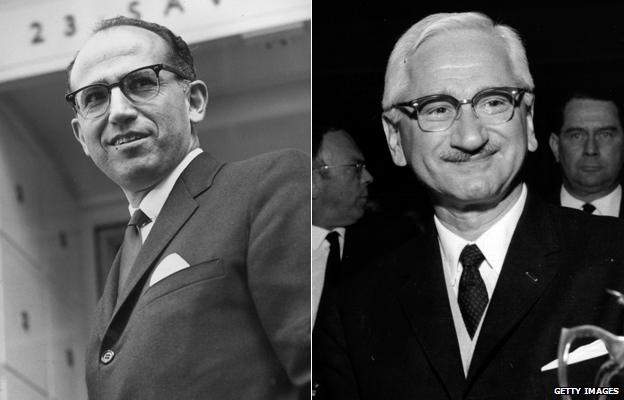
A major breakthrough came in 1952 when Dr Jonas Salk (left) began to develop the first effective vaccine against polio. Mass public vaccination programmes followed and had an immediate effect; in the US alone, cases fell from 35,000 in 1953 to 5,300 in 1957. In 1961, Albert Sabin (right) pioneered the more easily administered oral polio vaccine (OPV).
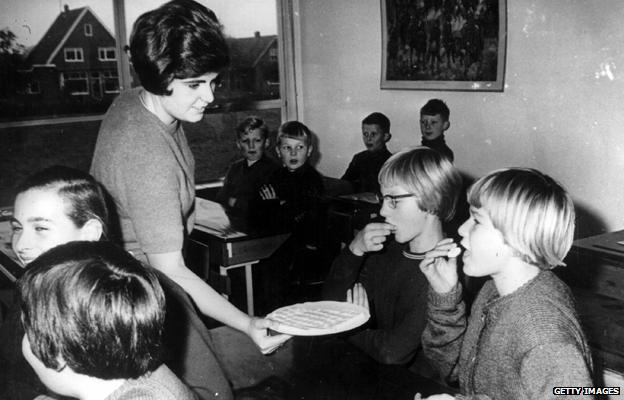
Despite the availability of vaccines, polio remained a threat, with 707 acute cases and 79 deaths in the UK as late as 1961. The next year, Britain switched to Sabin's OPV vaccine, in line with most countries in the developed world. There have been no domestically acquired cases of the disease in the UK since 1982.
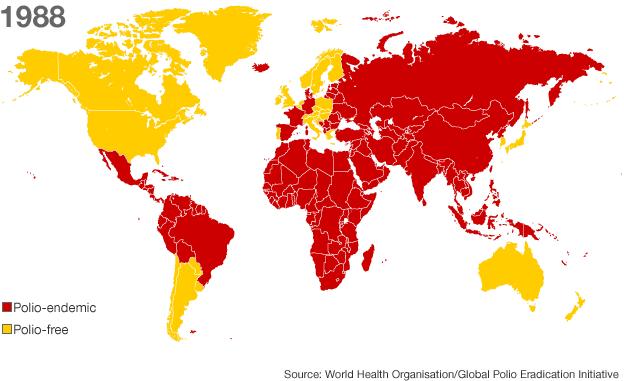
By 1988, polio had disappeared from the US, UK, Australia and much of Europe but remained prevalent in more than 125 countries. The same year, the World Health Assembly adopted a resolution to eradicate the disease completely by 2000.

The World Health Organization Americas region was certified polio-free in 1994, with the last wild case recorded in the Western Pacific region (which includes China) in 1997. A further landmark came in 2002, when the WHO certified the European region polio-free.

In 2012, polio remained officially endemic in four countries - Afghanistan, Nigeria, Pakistan and India, which was on the verge of being removed from the list, having not had a case since January 2011. Despite so much progress, polio remains a risk, with virus from Pakistan reinfecting China in 2011, which had been polio-free for more than a decade.
- Published18 May 2014
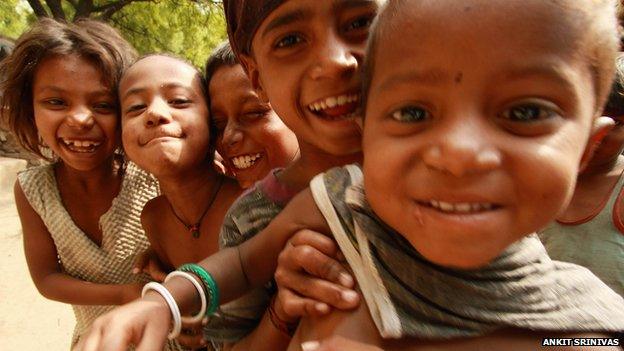
- Published27 February 2012
- Published20 February 2012

- Published5 May 2014
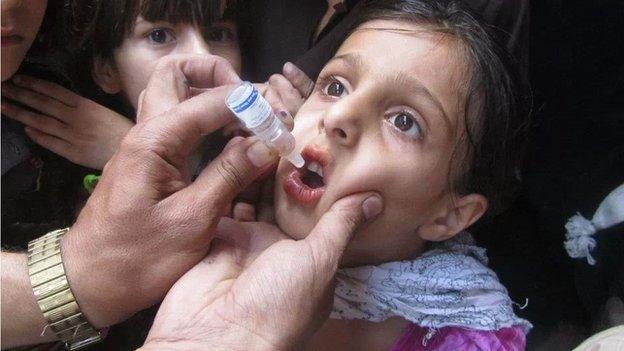
- Published6 May 2014